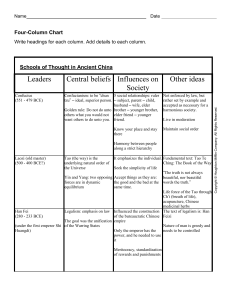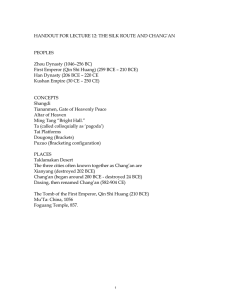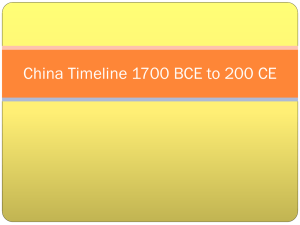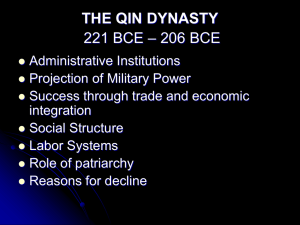THE LONG, BLOODY BIRTH OF THE CHINESE EMPIRE Heaven
advertisement
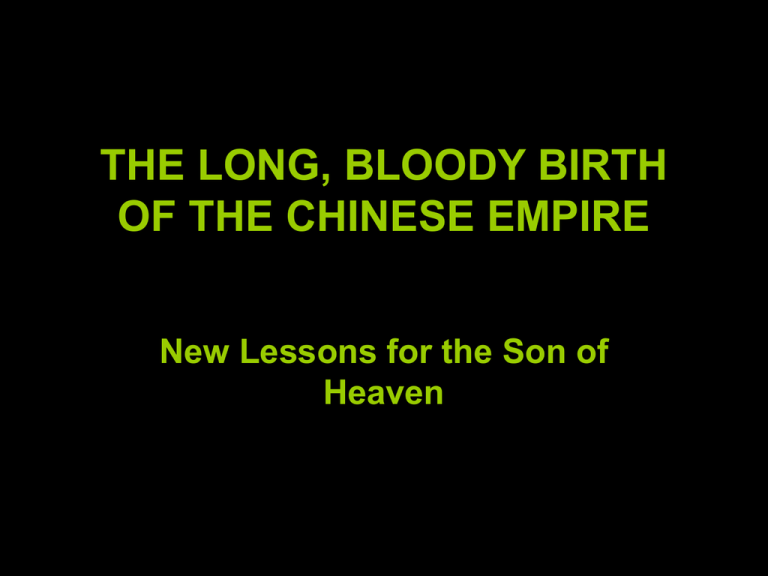
THE LONG, BLOODY BIRTH OF THE CHINESE EMPIRE New Lessons for the Son of Heaven The Legalists Xunzi (300-237 BCE) Han Feizi (d. 233 BCE) Sources: Internet Encyclopedia of Philosophy at http://www.iep.utm.edu/x/xunzi.htm and East-West Energy Chronicle at www.china-alberta.com/Graphics/hanfeizi.jpg Xunzi (300-237 BCE) • Confucian thinker that differed greatly with Mencius regarding his understanding of human nature • Little innate goodness in people • Li (ritual) refers to external standards imposed on the common people by sage kings Han Fei Zi (d. 233 BCE) • Founder of the Legalist School • Ruler as semi-divine figure • All social activity focused on strengthening the economy and military of the state China’s First Empire: Qin Dynasty (221-206 BCE) Qin Shi Huang Di (d. 210 BCE) • Final ruler of the Qin Kingdom and first emperor of China. • Erased the boundaries of the warring kingdoms and reorganized China into a system of Jun (commandaries). • Chose for himself a new political title “emperor” with the following elements: huang: “great one,” di: “emperor” (title once used for the Shang diety), shi: “number one” • Connected section of existing walls along the northern frontier to create the “Great Wall” to hold off the Xiongnu, which were the nomadic peoples living to the north and northwest of “settled” China.
